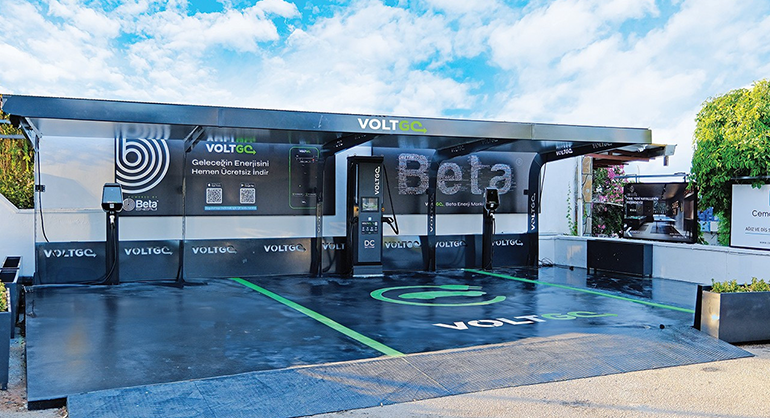
Voltgo, with its solution partner Beta Enerji, offers customers solutions from a single point by manufacturing and implementing end-to-end chargers and power units.

Electric vehicles (EVs) are becoming more and more popular and this increases the importance of electric vehicle charging stations. Charging stations allow EV owners to charge their vehicles safely and efficiently. In this article, we will explore the different types of EV charging stations and the features of each.
Power Supply: Powered by standard household outlets (120V AC). Charging Speed: Approximately 4-5 mph (6-8 km/h). Installation: No extra hardware required, just a charging cable. Area of Use: Generally suitable for home use.
Advantages
It is the most common and easily accessible charging method. Low installation cost. Portable and flexible use.
Disadvantages:
Charging time is quite long. Not suitable for long journeys.
Power Supply: Powered by dedicated charging stations or high voltage household outlets (240V AC). Charging Speed: Approximately 25-30 mph (40-48 km/h). Installation: Requires professional installation. Area of Use: Found in homes, businesses and public areas.
Advantages
Provides faster charging. Widely available and compatible with many EV models. Can be used both at home and in public areas.
Disadvantages:
Installation cost is higher than Level 1. Requires professional installation.
Power Supply: Uses direct direct current (DC). Charging Speed: Approximately 60-80 miles/20-30 minutes (96-128 km/20-30 minutes). Installation: Requires high-power electrical infrastructure. Area of Use: Found at commercial charging stations and highway medians.
Advantages
It is the fastest charging method. Ideal for long journeys and fast charging needs. Provides wide range.
Disadvantages:
Installation costs are very high. Generally not suitable for home use. Requires compatibility between charger and vehicle.
Power Supply: Uses inductive charging technology. Charging Speed: Similar speed as Level 2. Installation: Requires special equipment installation under the vehicle and in the parking lot. Area of Use: Can be found in homes, businesses and some public areas.
Advantages
Eliminates cable clutter. It is extremely easy to use. It is expected to become more common in the future.
Disadvantages:
Installation costs are high. Limited number of vehicles and stations are currently compatible.
Electric vehicle charging stations are an important infrastructure that makes life easier for electric vehicle owners and promotes the use of EVs. Level 1, Level 2, DC Fast Charging and Wireless Charging Stations offer various options for different needs and usage scenarios. As Voltgo, we aim to meet the needs of electric vehicle users and support sustainable transportation by providing high quality and reliable charging solutions. Stay tuned to our blog for more information about electric vehicles and charging technologies!
Related Blogs
Related Tags


Voltgo, with its solution partner Beta Enerji, offers customers solutions from a single point by manufacturing and implementing end-to-end chargers and power units.

Voltgo, Çözüm ortağı Beta Enerji ile uçtan uca şarj cihazları ve güç üniteleri üretimi ve uygulaması yaparak müşterilere tek bir noktadan çözümler sunmaktadır.